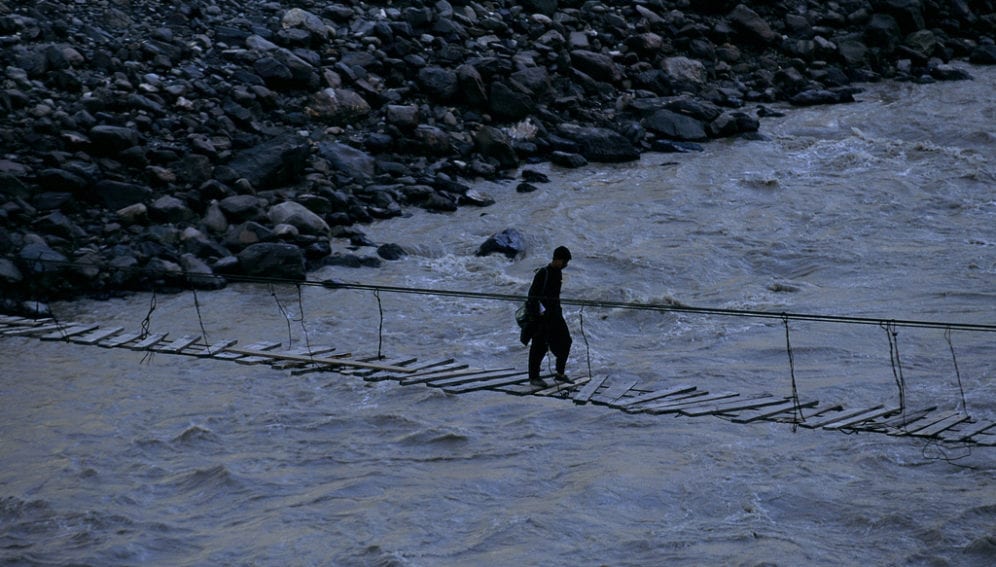By: Suhail Yusuf
Send to a friend
The details you provide on this page will not be used to send unsolicited email, and will not be sold to a 3rd party. See privacy policy.
[ISLAMABAD] Scientific studies conducted on the Ravi and Chenab rivers in Pakistan show that the sediment in these tributaries of the Indus is heavily contaminated with persistent organic pollutants (POPs) originating with pesticides and industrial effluents.
POPs include organochlorine pesticides (OCPs) and polychlorinated biphenyls (PCBs) that are used in various industries. They represent a group of compounds that have caused worldwide concern as toxic environmental pollutants. POPs accumulate in river sediments, offering an opportunity for monitoring them.
A study on OCPs and PCBs in the Ravi, published in February in Science of The Total Environment, found concentration of these contaminants to be higher in industrial areas than in agricultural sites along the river.
“While some of the chemicals are accidental byproducts of combustion or of industrial synthesis, others are manufactured for industrial use or as agrochemicals,” says Riffat Naseem Malik, an author of the study and associate professor at the department of environmental sciences of the Quaid-i-Azam University, Islamabad.
Going by established guidelines for sediment quality guidelines, screening-level risk assessment of OCPs and PCBs suggests that they have a potential for adverse effects on organisms that live in the river, Malik said.
Heavy utilisation of the Ravi river water by communities in the Punjab province for irrigation and drinking may be contributing to the contamination load, and highlights the need for further studies on potential risks to aquatic organisms and humans.
An earlier study published in the same journal (March 2013) showed levels of OCPs and PCBs in 11 edible fish species collected from the Chenab river to be high enough to be risky for people consuming more than eight grams per day.
Tests conducted by laboratories at the Guangzhou Institute of Geochemistry, Chinese Academy of Sciences, to support the Pakistan study, found fish samples highly contaminated with PCBs and OCPs such as DDT, dieldrin, heptachlor, and chlordanes.
POPs can bioaccumulate and magnify in the food chain, the main concern centring around their impact on top predator species and humans, says Malik.
“The recorded concentrations of OCPs and PCBs were relatively higher for all fish species collected from the sites located near industrial areas (Sialkot, Jhang/Faisalabad), followed by urban and agricultural areas,” Malik tells SciDev.Net.
OCPs such as dieldrin, heptachlor, and chlordanes — found in fish caught from the Chenab river — are known to increase a person’s risk to cancer. There is a need for continuous monitoring of these contaminants to mitigate their impact on human health and the environment, Malik says.
The Ravi flows through densely populated and industrial cities such as Lahore, picking up untreated industrial wastewater and municipal effluents along the way. PCBs in the sediment of the Ravi may also be coming from atmospheric deposition and run-off from contaminated soil in the surrounding areas, she says.
PCBs are not only toxic but also persistent as they do not readily degrade after being released into the environment through such activities as waste incineration. Their production is banned in many countries.
> Link to the study in Science of The Total Environment.
This article has been produced by SciDev.Net's South Asia desk.














